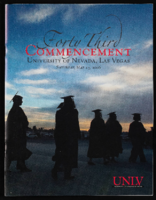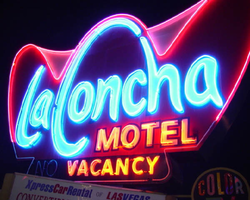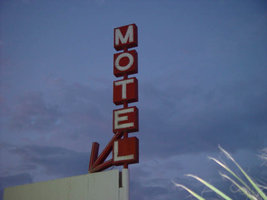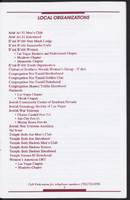Search the Special Collections and Archives Portal
Search Results
James Cashman Sr. Papers
Identifier
Abstract
The James Cashman Sr. Papers date from approximately 1890 to 1969 and contain correspondence, photographs, insurance records, and bank records related to Cashman and his businesses in Southern Nevada. The collection documents the lives of the Cashman family and their businesses in southern Nevada.
Archival Collection
Bill Campbell Costume Designs
Identifier
Abstract
The Bill Campbell Costume Designs (1954-1978) are comprised of original costume design sketches created by designer Bill Campbell for a number of Donn Arden's stage productions, including Pzazz!, Hello America, and Hello Hollywood Hello that were staged in the Crystal Room at the Desert Inn in Las Vegas, Nevada during the 1960s and 1970s. The collection also contains some sketches for other revues held in Los Angeles, California and Reno, Nevada. The majority of items in the collection are original drawings with attached fabric swatches; a number of items are xeroxed reproductions.
Archival Collection

University of Nevada, Las Vegas (UNLV) 43rd commencement program
Date
Archival Collection
Description
Commencement program from University of Nevada, Las Vegas Commencement Programs and Graduation Lists (UA-00115).
Text
Sondra Cosgrove (Vote Nevada) oral history interview conducted by Magalena Martinez and Elia Del Carmen Solano-Patricio: transcript
Date
Archival Collection
Description
From the Lincy Institute "Perspectives from the COVID-19 Pandemic" Oral History Project (MS-01178) -- Community organization interviews file.
Text

Photographs of La Concha sign, Las Vegas (Nev.), 2002
Date
Archival Collection
Description
Site address: 2955 S Las Vegas Blvd
Sign owner: Edward Doumani
Sign details: The La Concha is located north of the Riviera hotel Casino, just past the giant glass wall advertising for Splash. The La Concha double sided ground sign, sits close to the street on the east side of the strip, facing north /south. Directly to the east the origin of the signs shape resides in the form of the front structure of the La Concha's lobby structure. The sweeping elliptical roofline creates a structure dripping with the flavor of outlandish 50's-60's expressionistic modern design. The roadside ground sign reflects this shape actually mimicking it in a stylized silhouette of itself. The two icons are separated by a small but busy parking lot that expands north of the La Concha to house other similar style structures. The wings of the hotel, which extend out behind the main lobby, are a rather stark and plainly rectangular form, compared to the front portion of the lot.
Sign condition: Structure 4 Surface 4 Lighting 4 Notes: Considering the age of the property and the sign, it is in great condition, everything is intact, but not perfect.
Sign form: Pylon
Sign-specific description: The sign resides in a pleasant spot of green grass, among the concrete and black top surfaces. A rectangular base, painted a light hue of blue and gold, supports a double-sided sculpted cabinet in a three-pointed crown, which is the stylized profile of the building in sits in front of. Below the main cabinet a triangular internally lit message center has been added, as well as two more, flat rectangular cabinets on the north and south sides. The cabinets are adorned with text that advertising for car rentals located in the same neighboring lot. Off of the west side of the cabinet a small circular cabinet is cantilevered off of the edge. It is an internally lit marker, noting that color television is available inside. The surface of the actual cabinet is painted red, and is somewhat faded. The section of the cabinet that would be dedicated to the low-lying portions of the La Concha's roof are addressed in white. The "La Concha" is spelled across the front of the sign in white text outlined in blue. The text is designed specific to the sign, for the capital L and C are shaped to match the contours of the crowns of the sign. The rest of the script also takes on some of the same stroke of the manner. Motel is spelled in the same coloring across the bottom right hand portion of the signs face, in block text. The very bottom portion of the cabinet is a black painted horizontal extension with edges that angle back into the body of the sign. The words "vacancy' are written across the surface of the sign to the right hand side. No is spelled on the left, but only in neon. When illuminated the main text is lined with a light electric blue, while the edges, and the top contours are lined with a pink and fuchsia glowing borders. The words "vacancy" and "motel" are lined in an orange, amber colored, warm tubing.
Sign - type of display: Neon; Incandescent; Backlit
Sign - media: Steel; Plastic
Sign - non-neon treatments: Graphics; Paint
Sign animation: none
Sign environment: The La Concha sits just to the south of the Riviera's giant glass wall. Headed south, the property comes into view, being a quiet transition from the extreme nature of the Riviera. The sign sits in a black top expanse that meanders back into the rest of La Concha's property. The base of the sign is surrounded with plants and curbing, firmly rooted into the urban mainstream of the neighboring street.
Sign manufacturer: YESCO
Sign - thematic influences: The theme of the La Concha can be drawn directly from 1950's and 60's modern design. Such curve can be seen signs of the decade for example the original Dunes pylon displays elements of such curve and swell. In Jorg Rugemer's Lost Las Vegas, there is a picture of a 60's era automobile sitting next to the building. It is used to show the influences of the structures design present in the design of something as common as the automobile. It is reminiscent of the protruding fins and large eye like taillights seen on such autos. The sign itself is an interpretation of the building in a silhouette form, so it's angle draw from the same pool as well. The coloration of the neon is also reminiscent of the era. The turquoise, vermilion and red are reminders of such properties as the original Flamingo, and the Algiers.
Surveyor: Joshua Cannaday
Survey - date completed: 2002
Sign keywords: Pylon; Neon; Incandescent; Backlit; Steel; Plastic; Graphics; Paint
Mixed Content
Maurine and Fred Wilson and Dr. William S. Park Photograph Albums
Identifier
Abstract
The Maurine and Fred Wilson and Dr. William S. Park Photograph Albums (1900-1930s) consist of twelve albums containing black-and-white photographic prints and three black-and-white photographic negatives. The photographs are primarily related to the families of William S. Park, John S. Park, and Fred and Maurine Hubbard Wilson. Included are images of the Park homes in Las Vegas, Nevada; Park and Wilson family members; scenes of early Las Vegas, Nevada; outdoor activities, and vacation trips to California, Colorado, and Mexico.
Archival Collection
Fred and Maurine Wilson Photograph Collection
Identifier
Abstract
The Fred and Maurine Wilson Photograph Collection depicts the Wilson Family, events, and locations in Las Vegas, Nevada and the Southwestern United States from approximately 1860 to 1990. The photographs primarily depict early Las Vegas, including the Mormon Fort and Kiel Ranch; mines, towns, and railroads in Southern Nevada; the construction and planning of the Hoover (Boulder) Dam on the Colorado River; and the Wilson Family. The photographs also include prominent Las Vegas families such as the Park Family, aerial photographs of the city, landmarks on Fremont Street and downtown Las Vegas, and desert landscapes.
Archival Collection
Maurine and Fred Wilson Papers
Identifier
Abstract
The Maurine and Fred Wilson Papers (1888-1991) contain family papers and the historical research of Fred Wilson. It includes correspondence between Maurine and Fred Wilson, as well as Maurine Wilson’s diaries, calendars, and materials related to her career as a music teacher. The collection also contains Fred Wilson’s research files about the history of Southern Nevada as well as the First Methodist Church in Las Vegas, Nevada.
Archival Collection

Photographs of Happi Inn signs, Las Vegas (Nev.), 2002
Date
Archival Collection
Description
Site address: 3939 S Las Vegas Blvd
Sign details: The Happi Inn resides on the corner of Mandalay and Las Vegas Blvd, stretching east, ending at Gilles street. The property is the largest of the small roadside sites. The signage, however, is limited. Three pole signs and an internally lit cabinet comprise total signage. The two pole signs, being the tallest, reside on the north end of the property while a small vertical pole sign resides on the top of the building's roofline. The small internally lit cabinet sits over the drive, next to the main office.
Sign condition: Structure 3 Surface 4 Lighting 3 Notes: The structure of all the signs appear to be intact, with no visible, severe damage. Various lighting is out an all the signs, with the small roof line pole sign, no longer being lit. The internally lit cabinets on the sign within the pole sign furthest east, are no longer lit as well. The surfaces of the sign are intact, but are worn.
Sign form: Pylon; Fascia
Sign-specific description: Two pole style pylons, reside on the north end of the property. On the rear of the property on the corner of Mandalay Bay and Gilles Street, is a simple design. A single white, steel pole, supports three, two- sided cabinets stacked on top of each other to create the shape. A small white, horizontal, rectangular, cabinet, has a white face with "Office" painted in red text, and a red arrow pointing to the west. It sits slightly off center the center pole. A tall, thin, vertical, rectangular cabinet, is painted orange, and has the world "Motel," spelled in all capital, white neon letters. Centered on top of this cabinet, another internally lit cabinet, white cabinet, crowns the sign. The cabinet has a green face with white text spelling "Happi Inn" in all capital letters. The main pole sign for the property is similar to the previous piece, but a bit more elaborate. As the white pole rises up from the ground it is met with a pair of black, cabinets, sandwiching the north and south sides of the pole. The sign itself faces north south. The cabinets are white faced with text painted upon the surface. Above the two cabinets, a double-backed cabinet is crafted into an "L" shape, facing north, and facing south it would be a "J" shape. Either way it is a horizontal cabinet, which makes a horizontal turn to the east. The foot of the character curves down to a point, while the vertical section, runs up the west side of the white pole, which continues upward. The vertical surface contains the text "Motel" that is written horizontally downward in all capital, white, painted text. The graphic text is shadowed over with neon tubing. The horizontal section has the words "vacancy" written in white all capital text, with red neon lying over the surface. The top of the sign is crowned with a double backed, six sided, geometric cabinet. The surface is green written in capital, white text, with the word "Happi" written in an arched pattern, with "Inn" written horizontally below that. Over the entrance to the driveway, stretching into the east-end of the lot, is a small, internally lit cabinet, with rounded ends. The face of sign is green plastic with "Happi Inn" written in all capitals, in a two lined text. White, scroll-type designs, flank, both sides of the text. Just past the Psychic Sessions, palmistry establishment, actually standing on the corner of the building, a vertical pole sign, rises in the sky. I single red pole shoots upward a short distance, with five double-backed square cabinets being speared through the center. Each cabinet, also red, contains 1 letter from the word "Motel, in all capitals." The letters are overlaid with neon as well/ Pointing down toward the property, an angled arrow, crafted in the same fashion and material as the cabinet, is positioned just below the east side of the cabinet containing the letter "E."
Sign - type of display: Neon; Incandescent; Backlit
Sign - media: Steel; Plastic
Sign - non-neon treatments: Paint
Sign animation: Chasing, flashing, oscillating
Notes: the letters inside of the letters of the tower actually oscillate.
Sign environment: The Happi Inn is part of the distinctive section of the Strip comprised of older roadside motels, met with a few of the larger resort casinos. Facing west on the corner of Las Vegas Blvd and Mandalay Rd., the property resides in the shadow of Luxor. To the north, vacant land reaches until ended by the Tropicana property.
Sign - thematic influences: There appears to be no apparent theme associated with the Happi Inn other than the fact that it belongs to the style and genre of the roadside motel design seen throughout the southern end of the strip.
Surveyor: Joshua Cannaday
Survey - date completed: 2002
Sign keywords: Chasing; Pylon; Fascia; Neon; Incandescent; Backlit; Steel; Plastic; Paint
Mixed Content

